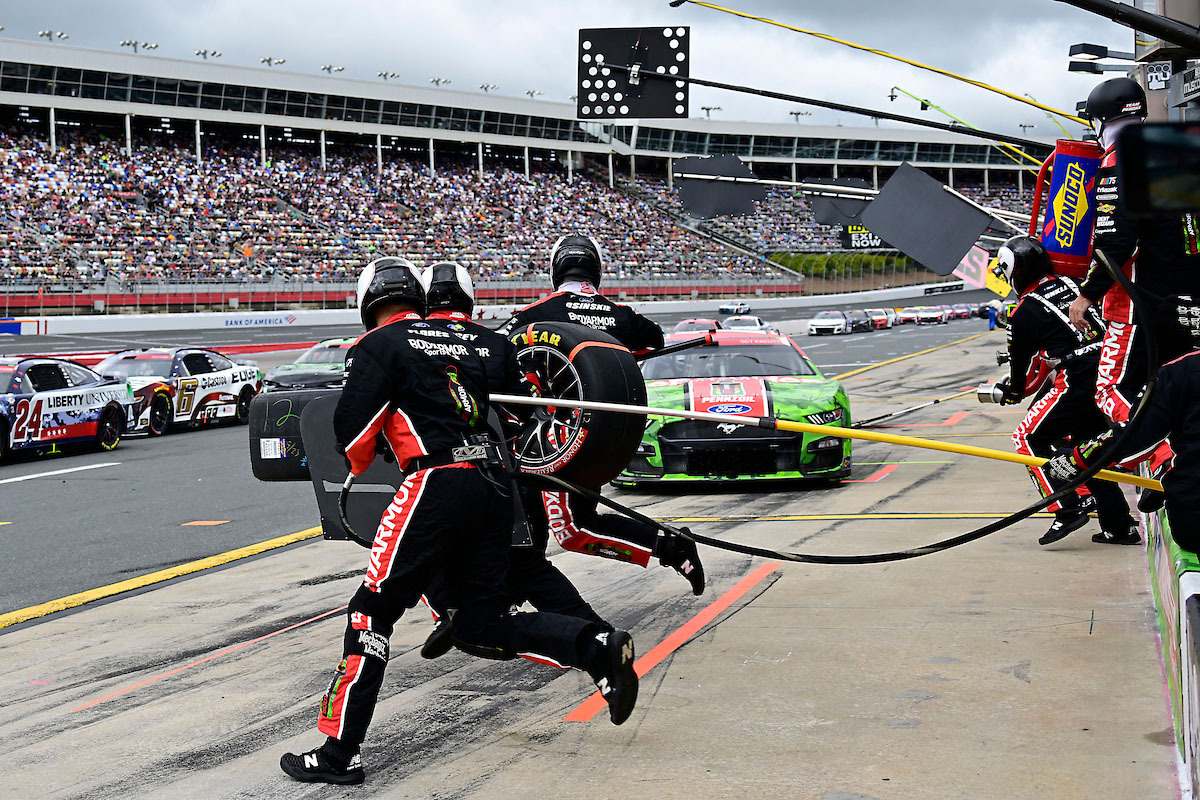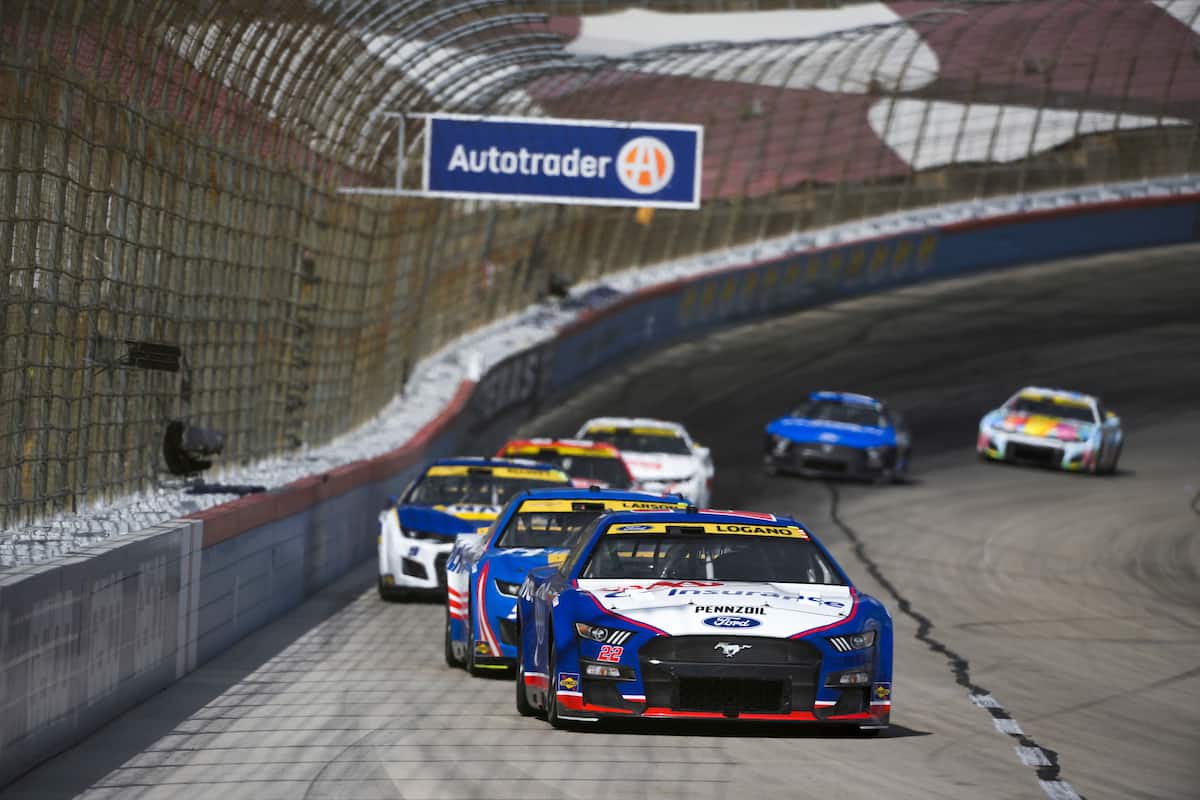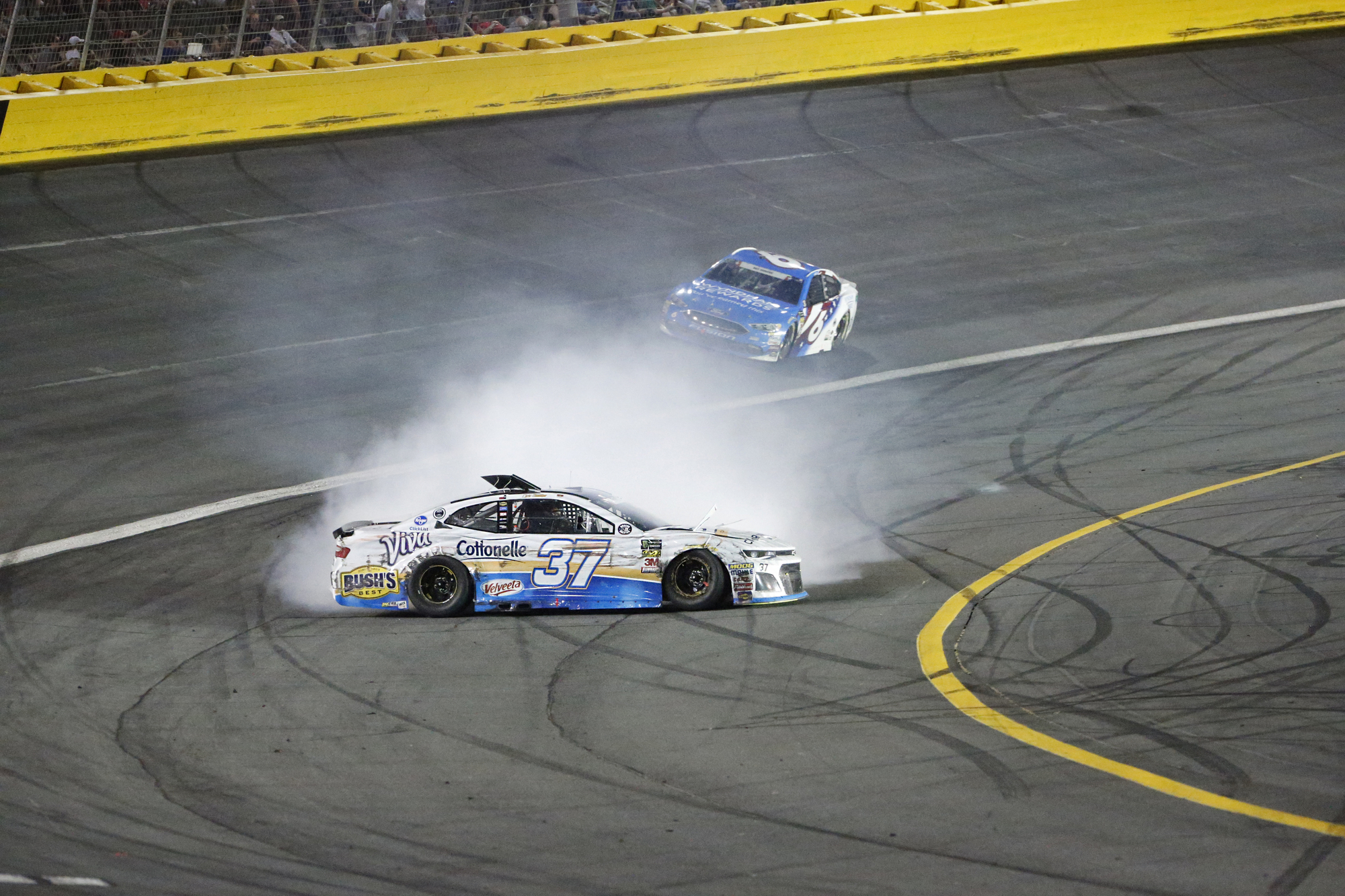How NASCAR was invented
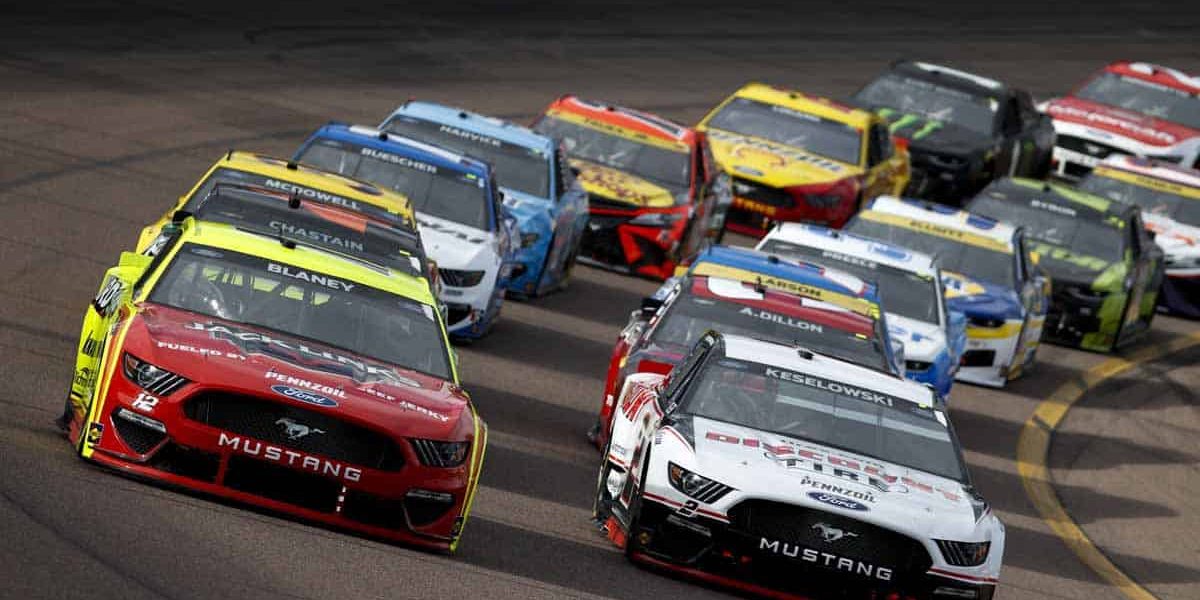
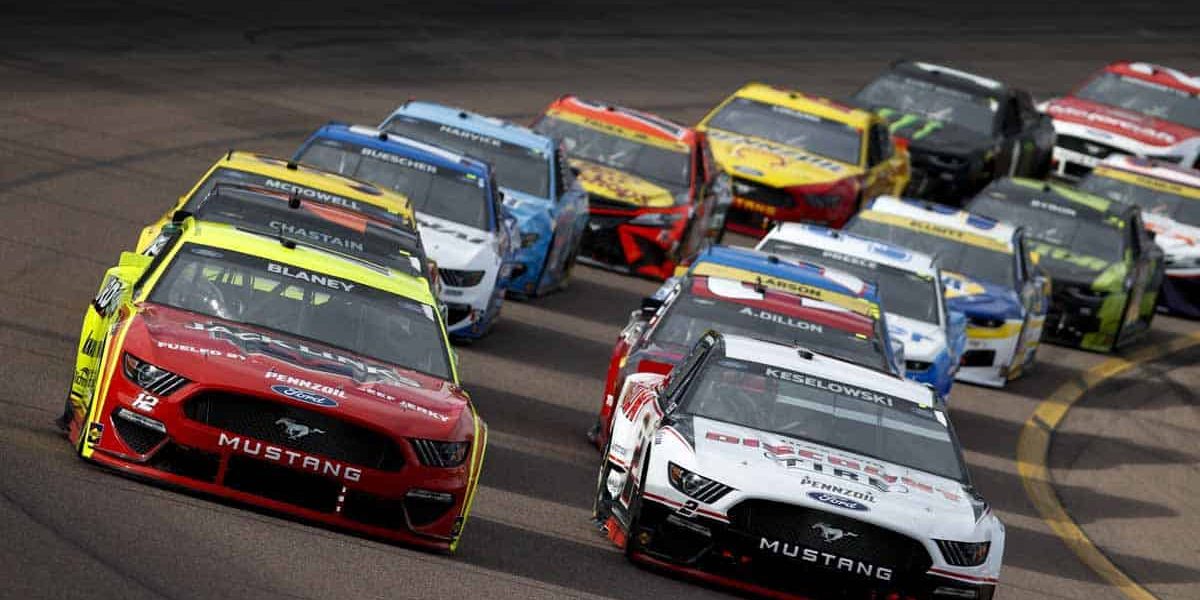
Table of Contents
Stock Car Racing: Through the Years
There’s a long history before and after NASCAR was invented.
During the 1920s and 1930s, Daytona Beach became the preferred location for world land speed records. Between 1905 and 1935, 15 records were set on the Daytona Beach Road Course after a historic race in 1903 between Ransom Olds and Alexander Winton.
Fast cars made Daytona Beach a household name by 1936. Drivers sped along a 4.1-mile (6.6 km) course divided into two straightaways by a 1.5–2.0-mile (2.4–3.2 km) stretch of beach, and a narrow blacktop beachfront highway, State Road A1A. At either end of the straights were two rutted, sand-covered, tight turns connecting the straights.
In the United States, stock car racing originated in bootlegging during Prohibition, when drivers ran bootleg whiskey primarily made in Appalachia. Bootleggers use small, fast vehicles to evade the police while distributing their illicit products. The drivers often modified their vehicles to make them faster and more maneuverable as well as to increase their cargo capacity.
In 1933, Prohibition was repealed. This caused the downfall of businesses that took advantage of it. However, Southerners had already developed a taste for moonshine which caused some drivers to commit tax evasion. The cars continued improving. By the late 1940s, races using these improved cars were held for fun, pride, and profit.
The Wilkes County region of North Carolina is most closely associated with these races, which were popular entertainment in the rural South. During those days, modified cars dominated most races. Road vehicles were reinforced and lightened.
LATEST: Will NASCAR go electric?

How NASCAR was invented: The Beginning of an Era
NASCAR didn’t magically appear and take the place among the top motorsports out there. Just like every sport, the foundation of this popular sport was built with blood, sweat, and tears some years ago.
Race cars were once driven off the street onto the track, but as safety technology improved, improvements were made to cars, as modern racing machines are more complicated and technologically advanced than ever before. Since the series began on the sands of Daytona Beach, NASCAR has grown into a thriving sport.
Bill France Sr. founded the company in 1948. The beginning of NASCAR is traced back to December 14, 1947—during the meeting organized by Bill France Sr. at the Streamline Hotel in Daytona Beach, Florida. It was then that NASCAR, the National Association for Stock Car Auto Racing, was born.
The first historical racing event took place exactly 2 months after, on February 15, 1948, at Daytona Beach. Red Byron was the first to ever win a NASCAR race and he was riding a Ford and it wasn’t the last time the world ever heard of his name.
The first NASCAR “Strictly Stock” (current Monster Energy NASCAR Cup Series) race, however, didn’t happen until June 19, 1949. Charlotte (N.C.) Fairgrounds Speedway hosted the event.
The first Daytona 500 was held at the high-banked 2.5-mile Daytona International Speedway on February 22, 1959. More than 41,000 fans attended the inaugural event which eventually turned out to be more historical than it already was—when the winner wasn’t decided until 61 hours later.
NASCAR founder Bill France Sr. passed the torch to his son Bill France Jr. on January 10, 1972, becoming the second president in the organization’s history.
The NASCAR NEXTEL Cup Series was launched in 2004 as the first season under the Nextel banner. The Chase for the NASCAR NEXTEL Cup was introduced as a new format to determine the championship.
2016 marked the beginning of NASCAR’s multi-year deal with Monster Energy, which included NASCAR’s premier series entitlement and its prestigious annual All-Star Race. The Monster Energy naming rights sponsorship began on Jan. 1, 2017, making it only the third company in NASCAR premier series history to serve as the entitlement sponsor.
The Automobile Racing Club of America was acquired by NASCAR in 2018. There is a long history between NASCAR and ARCA; ARCA founder John Marcum raced against Bill France Sr. Most recently, the series has served as a valuable stepping stone for drivers seeking to make it to NASCAR’s national series.
In the same year, Jim France—Bill Frace Sr.’s son who joined ISC in 1959, took the helm and became NASCAR’s Chairman and CEO. Since 1970, he has served ISC as secretary, assistant treasurer, vice president, chief operating officer, executive vice president and president.
The company’s headquarters is currently in Daytona Beach, Florida. There are nearly 1,500 NASCAR races every year in 48 US states, Canada, Mexico, and Europe.
Hall of Fame: The Significant People Who Became Part of NASCAR
William France Sr.
Also known as Bill France Sr., he founded the National Association for Stock Car Auto Racing (NASCAR). In addition to establishing NASCAR, building its initial survival and growth, and its controversial practices that continue to this day, he is one of the most important figures in American racing history.
Having grown up around racing, France later owned and operated his own service station. After moving his family to Daytona Beach, Florida in 1935, he immediately immersed himself in the automotive scene, which was then the most popular place to attempt world land speed records. France and other promoters continued to hold beach races after most record seekers went to the Bonneville Salt Flats in Utah. Up until World War II, France raced and promoted these events. After the war, he stopped racing and concentrated on promotion.
France began to think bigger when he realized that drivers were subject to promoters’ whims, some of whom would leave events with gate receipts while the race was still running. France founded NASCAR with several other drivers, car owners, and mechanics at the Streamline Hotel in Daytona Beach in 1947.
France built a track at Daytona large enough to host the new series a few years later, observing the success of tracks like Darlington Raceway in South Carolina. The Daytona 500 was held for the first time in 1959 and became one of the world’s premier racing events over the years. A decade after opening Daytona, France built Talladega Superspeedway in Alabama, another NASCAR track.
During his tenure as NASCAR’s first chairman and CEO, France introduced the Reynolds Tobacco Company into the sport. In 1971, NASCAR renamed its Grand National Series to the Winston Cup and increased its sponsorship presence; after several other changes, the series became the Sprint Cup Series in 2008.
The methods France employed helped transform NASCAR from a Daytona beachfront series into an international phenomenon, but he ran the sport according to his personal preferences, which included steamrolling drivers who tried to unionize in the late 1960s.
Besides shaping on- and off-track rules, France also shaped NASCAR in a way that continued decades after his death when the sport was handed over to France’s descendants. As an example, he used the catchall rule “actions detrimental to stock car racing” (which is still in use) to justify a wide range of authoritarian decisions, such as when Lee Petty ran in an unsanctioned “outlaw” race in 1950 and France promptly removed all of his NASCAR points, denying Petty the championship.
Nonetheless, NASCAR continued to be a multibillion-dollar attraction thanks to France’s early efforts. NASCAR’s inaugural class of the Hall of Fame inducted him in 2010.
Erwin “Cannonball” Baker
Erwin Baker had an early interest in competitive sports. Among Baker’s many talents were boxing, wrestling, and tumbling. During the early 1900s, he was part of a travelling vaudeville group with an acrobatic drill team. He also began competing in bicycle races at that time, which led to his participation in motorcycle racing in the early days.
While he initially focused on bike racing, he eventually became the first NASCAR commissioner after being appointed.
He competed in more than 143 long-distance events during his career, logging more than 550,000 miles. Baker died from a heart attack in Indianapolis in 1960. He clearly made his mark both in motorcycle and car racing circles during his 78 years, to the point that modern-day transcontinental races are still called “Cannonball Runs” after him.
Baker was Bob “Barky” Barkhimer
Known affectionately as Barky to his many friends and associates, Barky met Bill France, Sr., founder of NASCAR, in 1954. He became the Senior Vice President at NASCAR. It was the start of a successful business relationship between the two men. A merging of CSCRA and NASCAR brought popular west coast drivers under the NASCAR umbrella. As a result, NASCAR began conducting races at 10 of Barky’s tracks, making it truly a nationwide organization.
Wendell Scott
Scott raced stock cars as a professional driver in the United States. He made history as he was the first Black driver to race full time in the NASCAR premier series and the first to win a race.
After serving as a motor pool mechanic in World War II for three years, Scott opened his own auto repair shop once he returned home. Besides driving taxis, he also transported moonshine in his native Virginia.
On May 23, 1952, Scott broke the stock car colour barrier at the Danville Fairgrounds dirt track when he drove his old Ford. He was recruited by a local promoter. Scott was persuaded to go racing after finishing third and earning $50 in payout.
Racing was difficult for Scott mainly because he was black, and also because finances were tight, but it didn’t stop him and his family from pursuing a career in racing. Driving used cars, he dominated the race tracks.
After an accident at Talladega, Alabama, in 1973, Wendell Scott was forced to retire due to injuries; however, he made one more start at Charlotte and finished 12th. During his Grand National career, he achieved one win and 147 top-ten finishes.
He was eventually posthumously inducted into the NASCAR Hall of Fame in 2015.
Sara Christian
Sara Christian was the first woman driver in NASCAR history. Christian took part in NASCAR’s first race on June 19, 1949, at Charlotte Speedway. Driving her husband’s #71 Ford, she qualified 13th.
Although her racing career was short-lived, having retired just after 2 years, there is no doubt that she made history and deserves a place on this list.
Bill Elliott
Named as one of NASCAR’s 50 Greatest Drivers, Bill Elliott is a living legend.
Over the course of his 37-year driving career, Bill Elliott has accumulated an impressive list of accomplishments that puts him near the top of a number of NASCAR all-time lists.
His 44 wins are 16th all-time, and his 55 poles are 8th. However, his most prestigious achievement was winning the NASCAR premier series in the 1988 championship having six wins, 15 top fives and 22 top 10s in 29 races on his lap. Three times he won the Southern 500 at Darlington Raceway and twice he won the Daytona 500. He also won the Winston 500 at Talladega Superspeedway in 1985, earning him the “Winston Million” bonus by winning those three out of four marquee events.
He was inducted into the NASCAR Hall of Fame in 2015.
Richard Petty
Speaking of living legends, here’s another one: The King.
The most decorated driver in NASCAR history, and a member of the NASCAR Hall of Fame, he has record number 200 career race wins and seven Monster Energy NASCAR Cup Series Championships during his brilliant career. He really did earn the title.
Currently, Richard Petty spends much of his time overseeing Richard Petty Motorsports, a NASCAR race team, as well as Petty’s Garage high-performance speed shop.
How did moonshine bootlegging give rise to NASCAR?
Moonshine’s rather classy and mystery-evoking name is derived from the method it was distilled—to avoid detection of smoke rising from the stills and ultimately busting the operation, the drinks were made under the moonlight.
The first moonshine was brought to the United States by Scottish and Irish immigrants in the 18th century as a result of officials taxing liquor sales. With the introduction of Prohibition—a nationwide constitutional ban on the production, importation, transportation, and sale of alcoholic beverages—manufacture and distribution skyrocketed.
As business boomed, hidden distilleries needed vessels to transport the illegal liquor across the country. Cue the cars that posed ordinary—the wolves in sheep’s clothing. On the outside, the cars looked ordinary enough to pass suspicions of smuggling these contrabands. But on the inside, everything was far from ordinary.
To protect the jars containing booze from breaking on bumpy mountainsides, the vehicles were fitted with heavy-duty shocks and springs. There was usually more booze in the back when the back seats were removed. Moreover, high-powered engines gave the cars extra speed, enabling them to outrun any cops or tax agents along the way.
Drivers in the area knew every path like the back of their hands; they were able to outrun those who pursued them, even turning off their headlights and still navigating. These drivers became notorious for their reckless driving, even coining maneuvers among them. In their free time, they didn’t spend smuggling alcohol, many of the runners raced other runners for bragging rights.
With the end of Prohibition in the 1930s, demand for bootlegged liquor waned, leaving the runners with souped-up cars, but out of work – though they continued to participate in organized races.
NASCAR, the National Association for Stock Car Auto Racing, was established on December 14, 1947, when one of these runners, Big Bill France, held a meeting with other drivers, owners and mechanics to standardize the racing rules. The first race took place two months later.








